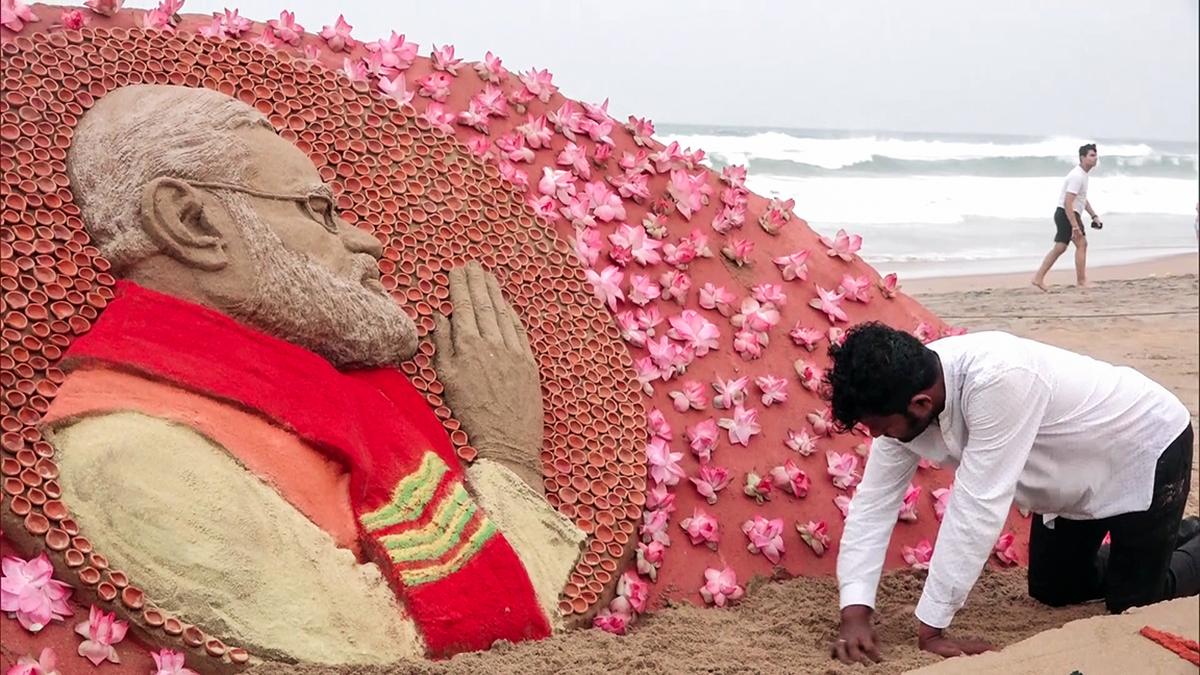Sand artist Sudarsan Pattnaik creates sand art congratulating Prime Minister Narendra Modi on getting re-elected for the third consecutive term, at Puri beach.
| Photo Credit: ANI
With its near-clean sweep in Odisha (20 out of 21 seats), the Bharatiya Janata Party (BJP) has finally managed to entrench itself in the eastern parts of the country. It also displaced the Biju Janata Dal (BJD) government, which ruled Odisha for nearly quarter of a century. There was a vacuum in the State due to the continuing decline of the Congress, which offered the BJP an opportunity to move in.
With its robust vote share of 45%, the BJP was able to attract most sections of the Odisha voters in substantial proportions. However, the BJD retained over 46% of the vote share in urban areas. This was a reversal of the 2019 elections when the BJP gained more in urban areas and the BJD in rural areas. This time, the BJP had an upper hand among rural voters. Its promise of providing ₹3,100 per quintal rice gave it a major boost. The growing discontent of the rural people towards the BJD organisation at the grassroots also contributed to the BJP’s rise.
The BJD had invested significantly in women voters through self-help groups. The Lokniti-CSDS post-poll survey suggests that this didn’t help the party much: the BJP got support from 43% of the women voters in comparison to the BJD’s 39%. The BJP had greater support among men (47%) than women.
The BJP managed to garner greater support from upper castes and Other Backward Classes (OBCs), particularly “upper” OBCs. “Lower” OBCs were equally divided between the BJP and the BJD (48% each). Dalits and Adivasis were a little more fragmented three ways: the Congress received support from 16% of the Dalits and 23% of the Adivasis.
In sum, Odisha witnessed a complete political turnaround this time. Previously, despite voting in favour of the BJP for parliamentary seats, voters returned the BJD to power in the State. This time, though, the BJD was completely displaced from power. Besides a routine change of power that political competition ensures, the strident campaign of the BJP including its criticism about an ‘outsider’ controlling the State government seems to have worked. That criticism also helped the BJP create a narrative of ‘Odia Asmita (self-pride)’. The outcome helped the BJP consolidate its all-India presence. It also helped the party avoid a more serious dent in its seat tally in Parliament.
Gyanaranjan Swain Professor and Head, School of Political Science, GM University
